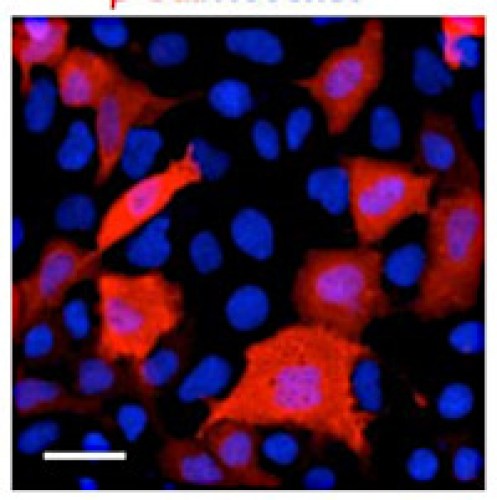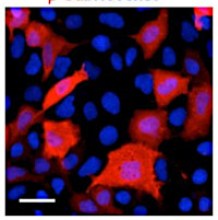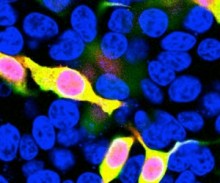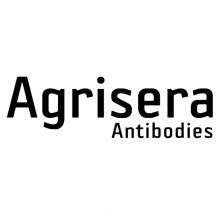
Anti-GAL | Beta galactosidase
(Cat#: AS20 4515)


Description
- Immunogen: Full length Beta galactosidase from E.coli UniProt: B7UJI9
- Host: Rabbit
- Clonality: Polyclonal
- Purity: Total IgG. Protein A purified in PBS, 50 % glycerol, filter sterilized.
- Format: Liquid at 2 mg/ml.
- Quantity: 200 µg
- Storage: Store at -20°C, Avoid repeated freeze-thaw cycles. Please remember to spin the tubes briefly prior to opening them to avoid any losses that might occur from material adhering to the cap or sides of the tube. , Do not store this antibody below -20°C
- Tested applications: ELISA (ELISA), Immunofluorescence (IF), Immunoprecipitation (IP), Western blot (WB)
- Expected | apparent MW: 1: 2000 - 1: 3000 (ELISA), 1: 200 - 1: 500 (IF, IP), 1 : 1000 - 1: 2000 (WB)
- Confirmed reactivity: 116 kDa
- Beta-galactosidase is an exoglycosidase which hydrolyzes the β-glycosidic bond formed between agalactose and its organic moiety. It may also cleave fucosides and arabinosides but with much lower efficiency. It is an essential enzyme in the human body. Deficiencies in the protein can result ingalactosialidosis or Morquio B syndrome. In E. coli , the gene of β-galactosidase, the lacZ gene, is present as part of the inducible system lac operon which is activated in the presence of lactose when glucose level is low. It is commonly used in molecular biology as a reporter marker to monitor gene expression. It also exhibits a phenomenon called α-complementation which forms the basis for the blue/white screening of recombinant clones. This enzyme can be split in two peptides, LacZα and LacZΩ, neither of which is active by itself but when both are present together, spontaneously reassemble into a functional enzyme. This property is exploited in many cloning vectors where the presence of the lacZα gene in a plasmid can complement in trans another mutant gene encoding the LacZΩ in specific laboratory strains of E. coli . However, when DNA fragments are inserted in the vector, the production of LacZα is disrupted, the cells therefore show no β-galactosidase activity. The presence or absence of an active β-galactosidase may be detected by X-gal, which produces a characteristic blue dye when cleaved by β-galactosidase, thereby providing an easy means of distinguishing the presence or absence of cloned product in a plasmid. E. coli β-Galactosidase consists of 1,024 amino acids with molecular mass of 116 kDa and functional form is a homotetramer.
Boca Scientific is your premiere source for high-quality, innovative solutions for Cell Biology, Molecular Biology, Immunology, genetics and other lab products and reagents. We bring leading-edge products from our own-line and around the world to laboratories in the US and Canada. Our goal is to offer excellent solutions to drive research and discoveries backed by superior customer support.


